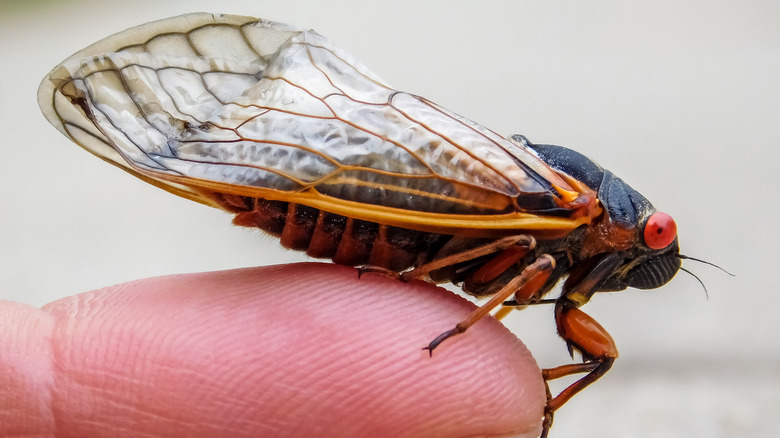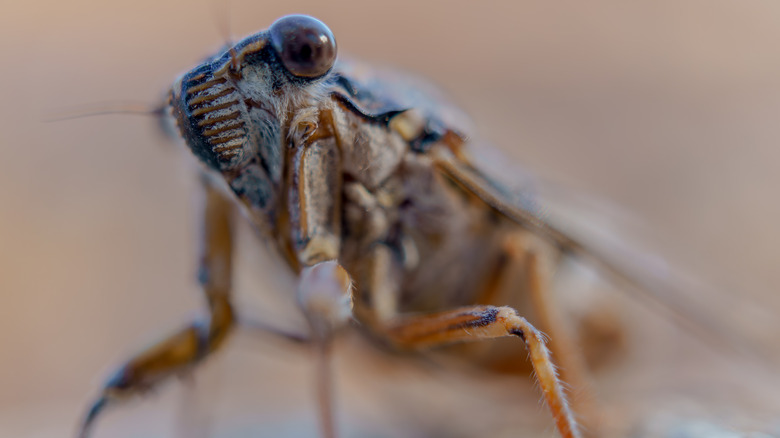The Cicada Myth You Shouldn't Fall For
If you've ever been outside on a hot summer day, you've probably experienced the loud, almost rhythmic sound of cicadas. The male cicadas make those sounds mainly to attract females, although they make sounds for other reasons, too. And the hotter it is, the louder they get (via The Tennessean).
But cicadas are also known for another attribute — their eyes. Oddly enough, they have five of them. One pair sits on the sides of their head, and these are called compound eyes. They also have three tiny eyes, called ocelli, between them. Cicadas see with their compound eyes, and it is thought that the smaller eyes help them differentiate between light and dark, per Cicada Mania. While the majority of cicada compound eyes are red, some can have white or blue eyes, according to Vanderbilt University, and that rarity has led to a myth that you shouldn't fall for.
A prize for blue eyes
The myth involves a cash payment of anywhere between $100 and $1,000 for blue-eyed cicadas, and it goes back to 2004, when word spread that Johns Hopkins University was willing to pay cash for them. As you might imagine, the university was inundated with reports from people who claimed to have captured the blue-eyed critters, willing to make a deal. Despite the university announcing they were not paying for blue-eyed cicadas, that didn't stop people from trying to cash in, per the Baltimore Sun.
Jump ahead seven years, and the same rumor spread — except this time it involved Vanderbilt University offering up to $3,000 for blue-eyed cicadas. Vanderbilt biologist Patrick Abbot acknowledged that while blue-eyed cicadas are indeed rare, the notion that the university is paying for them is nothing but a "recurrent myth." And when new cicadas emerge from the ground, a new myth seems to arise with them.
No one knows how the myth started
Like many urban tales, no one knows exactly how the blue-eyed cicada myth started. That said, some think it might go back to 1947 when Johns Hopkins University biologist William McElroy was researching bioluminescence and offered children in Baltimore $.25 for every 100 fireflies they could bring him. The Baltimore Sun reports that they did not let him down, which resulted in him gathering as many as million fireflies in just one summer.
Perhaps the money-for-insects idea was too good to die, and it evolved to include the unusual blue-eyed cicada. In 1987, the myth generated a lot of phone calls for Tom Saunders, supervisor at Baltimore's Rumor Control Center. A 7-year-old boy even captured a blue-eyed cicada in hopes of cashing in, but he was sadly disappointed when he discovered there was no reward for the rare insect (via Baltimore Sun). The best thing you can do if you see a blue-eyed cicada is to enjoy it, because they are harmless to people and the environment, per the Environmental Protection Agency.


